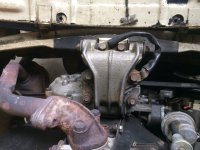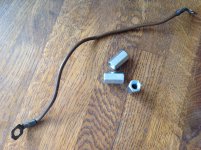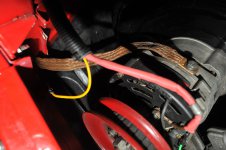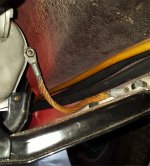My engine mount cracked, and I just replaced it. It had a ground strap on it that bridges the chassis side of the engine mount to the engine side (photo attached).
I haven't seen this grounding strap in any manuals. Anyone have any idea why it might be there? (It's a 126 engine in a 500L body, if that could have something to do with it.)
Thanks.
I haven't seen this grounding strap in any manuals. Anyone have any idea why it might be there? (It's a 126 engine in a 500L body, if that could have something to do with it.)
Thanks.






